wikiHow is a “wiki,” similar to Wikipedia, which means that many of our articles are co-written by multiple authors. To create this article, 9 people, some anonymous, worked to edit and improve it over time.
This article has been viewed 24,503 times.
Learn more...
The medical scribe profession was created to allow physicians to spend more time with patients and less time on charting, in order to maximize the benefits patients receive. Therefore, it is imperative that a medical scribe is trained effectively to assist the provider they are working with in any way possible. Although scribes are not in direct contact with patients, they serve a large benefit for the patient by assisting the doctor and allowing him/her to be attentive to their needs.
Steps
Classroom Training
-
1Learn to type faster. Medical scribing requires extensive documentation of the encounter between the patient and provider. Whether it be the history, physical, plan of care, or disposition information, you are required to take note of every aspect of the patient's visit. For this reason, it is crucial for you to be able to type at a high speed. Typically, scribes are required to type at a speed of at least 60 words per minute.
- Practice with online tools and resources, evaluating your initial typing speed in words per minute.
- Improve your body positioning. Do not slump, keep your posture upright.
- Evaluate your finger positioning. Utilizing the QWERTY keyboard maximally allows faster transcribing.
- Practice with dictations, listen to something and try typing it out as you. This is an effective method because ultimately you will be typing the physician's dictation.
-
2Learn medical terminology. During training sessions, you will be provided with general medical terminology. It is imperative that a scribe is able to learn and comprehend these terms.
- In addition to the terminology, it may be helpful to learn Latin roots, thus allowing you to interpret terms that are unfamiliar to you.
- Not only will learning medical terms allow you to transcribe faster while the physician is speaking to you, but you will be able to get a better understanding of what the patient's course of treatment will be.
Advertisement -
3Understand laboratory and radiology orders. Much like learning medical terminology, becoming familiar with common laboratory and radiology testing will allow you to get a better sense of assessing a patient's health etiology. Providers place orders for laboratory and radiology studies to obtain further information regarding a patient's condition. Understanding which studies are ordered for certain cases and why will make it easier to recognize the plan of action and medical decision-making when the physician may dictate them to you.
- Do not ever hesitate to ask the provider why he placed certain orders on a patient or what the results of the study indicate. Most are happy to help clarify any confusion.
-
4Determine the History of Present Illness. Finally, after familiarizing yourself with all the prior aspects, you have the knowledge and understanding to write a proper History of Present Illness. When a patient presents to be seen by a clinician, it is imperative you document the story just as the patient describes, but using the appropriate medical terms and descriptions.
- The History of Present Illness is the patient's explanation of what is going on with him/her, it is crucial that this history is well documented in order for other physicians, billing companies, or authoritative personnel are able to understand the story.
- Practice writing a History of Present Illness by listening to an online video of a patient presenting to the emergency department explaining their complaints.
- Ensure you only include information pertinent to the patient's history. Irrelevant information is not appropriate to be placed into the History of Present Illness.
- Listen for specific questions the physician may ask patients while they are being evaluated and make sure to include that information in your history.
- Always ask the physician you are working with if you are unsure of what the patient stated.
Floor Training
-
1Always be aware of patient confidentiality. First off, it is essential that each scribe understands the importance of patient confidentiality. In this profession, you will be exposed to a plethora of information regarding a vast amount of people, and you are required through the law to keep this information confidential.
- Most medical scribes are obliged to sign a document stating that they will keep any information disclosed to them private and secure.
- There are numerous implications if this is defied by any scribe, which is why it is imperative to emphasize that being a successful scribe implies an understanding that all patient information is exclusive.
-
2Understand the documenting system. Once you have received adequate classroom training, the clinical training begins where most scribes are taught how to document encounters using the hospital or clinic's system of choice while training in the clinic.
- This is more of a hands-on approach to allow trainees to get a feel for what exactly the job entails.
- Mastering how to create notes, modify notes, insert procedures or radiology reports into notes, and input proper diagnosis and disposition information is crucial.
- Without grasping how to properly use the charting system, you can only be so effective, which is why taking the time to learn and appreciate documenting an interaction will help you in the long run.
-
3Become familiar with the clinic. Not only is it important to become familiar with the charting system, but also with the hospital/clinic itself. This may seem like a minuscule detail, but it does make a big difference in aiding the provider you are working with.
- Many times, physicians are unable to recall the names of every patient they are evaluating and will refer to them by their patient room numbers.
- Often times the provider will ask you to meet him/her at a certain room, or patients may even ask you to direct them to their family members. Therefore, becoming acquainted with the site you are working at can go a long way.
-
4Establish relationships. Finally, establishing great relationships with the providers will not only make your job easier but make it worthwhile as well! We all know physicians are very intelligent and approachable people, but they also know how to make the best of any situation and have a sense of humor about things.
- Once you are familiar with the physicians you are working with, it will make your profession enjoyable as well.
- It is all about the first impressions, show the physician you are a respectful, hardworking individual and that will go a long way with them!
On the Job
-
1Become a good listener. One of the most important characteristics that a great scribe possesses is being a good listener. There will be lots of information being spewed at you from patients and doctors, therefore you are required to always keep your ears open and actively listen in order to get all the details down.
- This may seem like an obvious task, but when you are trying to formulate a History of Present Illness that is accurate and concise, you may get lost in your work and miss critical details that the patient describes.
- Some physicians will want you to document any conversations that occur between them and a consulting physician on the phone, which will require your conscious effort to actively listen while this is going on.
- Practice your ability to listen while writing a History of Present Illness while listening to an online video of a patient explaining to the physician their complaints.
-
2Be courteous to the physicians. Another important aspect of being a successful scribe is being courteous of the physician's time. Being a scribe will require you to be adaptable to work during hectic times in the clinic/hospital and keep up with the charting.
- Many physicians will want to have all the charts sent to them before the shift is over, therefore you will need to be on top of the work to make sure they are complete and sent to the provider.
- Being on time is crucial in this field. It is unacceptable to keep a physician waiting because ultimately you are keeping the patient waiting.
-
3Be aware of patient's plan. The best scribes are the ones that are on top of their charting and aware of every aspect of the patient's plan of care at all times. This requires respectfully prompting physicians to place laboratory, radiology, or medication orders on the off chance they forget to do so.
- This directly benefits the patient by making sure everything is in place to take care of their needs.
- Making physicians aware that laboratory or radiology studies have returned also aids the patients and lets the providers know that you are paying close attention to the patient's care.
-
4Have a positive attitude. Last but not least, the most important aspect is to maintain a positive attitude! The medical scribe profession was created in order to aid physicians and increase the amount of time they spend with their patients.
- Coming into work with a smile on your face and prepared to aid the physician in any way possible is the best mentality! It will go a long way with the physician, you will be showing him/her that you are eager to work hard and soak up all the knowledge you can.
- Ultimately, doing so will create a stronger relationship with the providers you are working with and the patients being cared for.
Warnings
- Medical scribes accompany the physician into the patient's room and thus are exposed to anything and everything that a doctor may see. Don’t go into this field if you are squeamish at the sight of blood, wounds, etc.⧼thumbs_response⧽
- Although many physicians are friendly and understanding, they will not be pleased if you are unable to keep up with the work and/or inattentive.⧼thumbs_response⧽

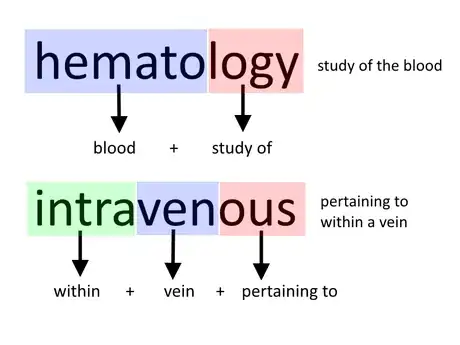
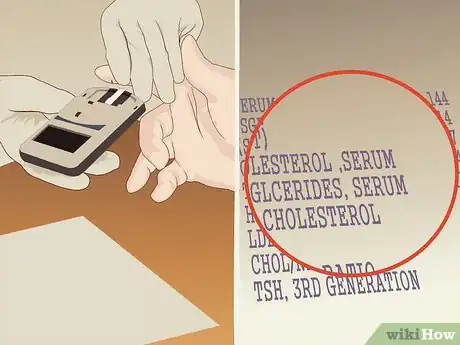
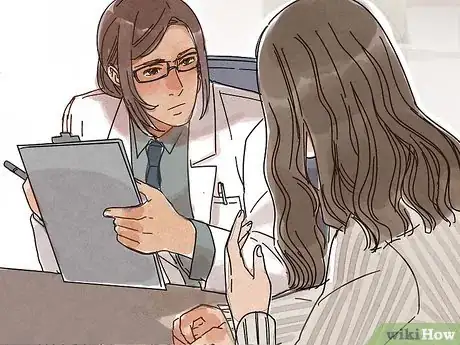



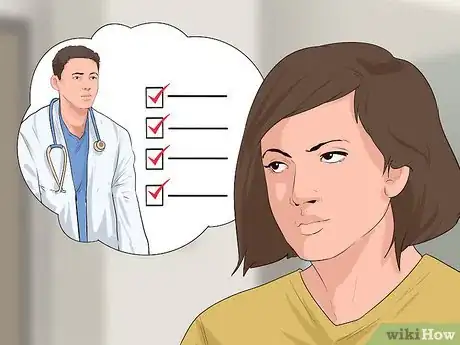
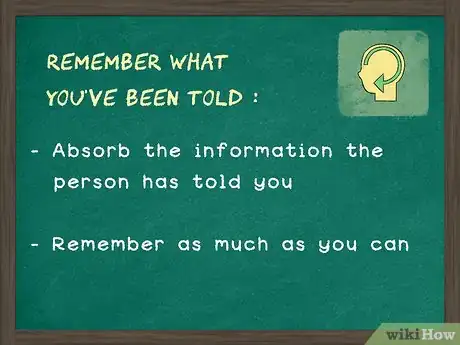





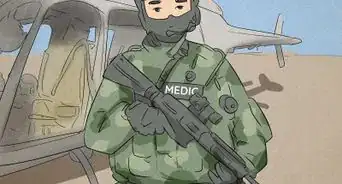





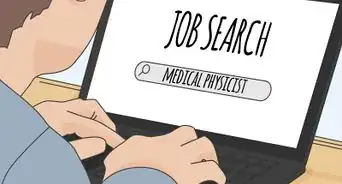




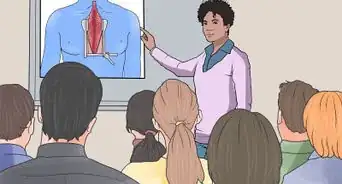






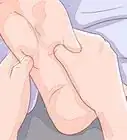






































Medical Disclaimer
The content of this article is not intended to be a substitute for professional medical advice, examination, diagnosis, or treatment. You should always contact your doctor or other qualified healthcare professional before starting, changing, or stopping any kind of health treatment.
Read More...